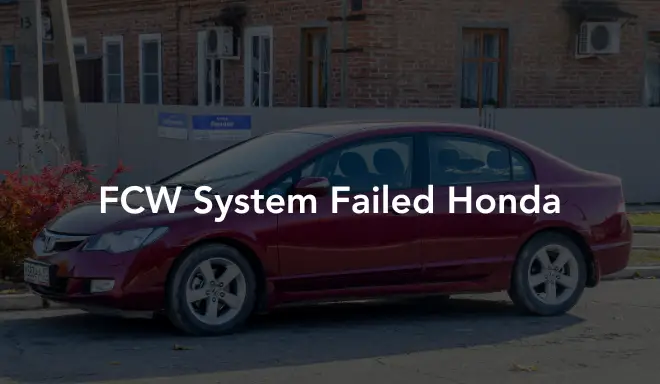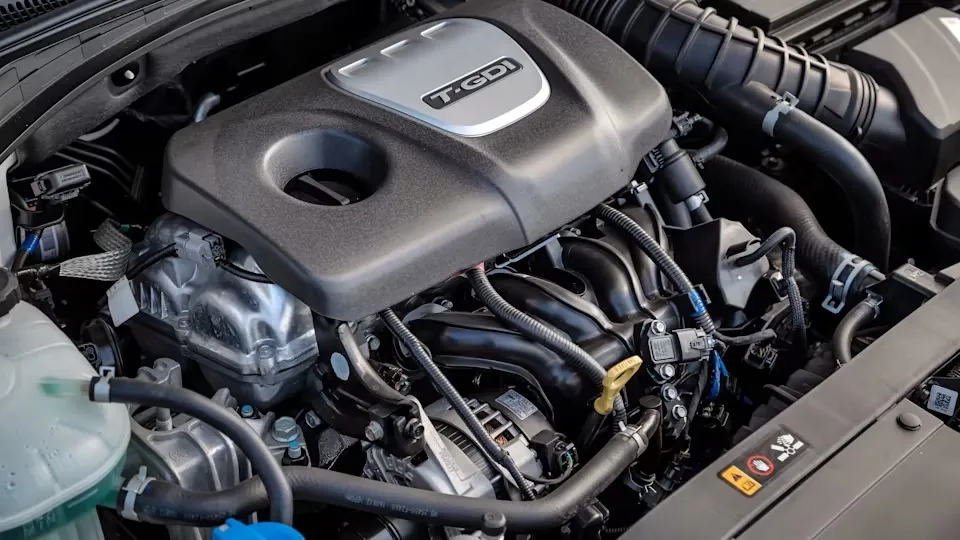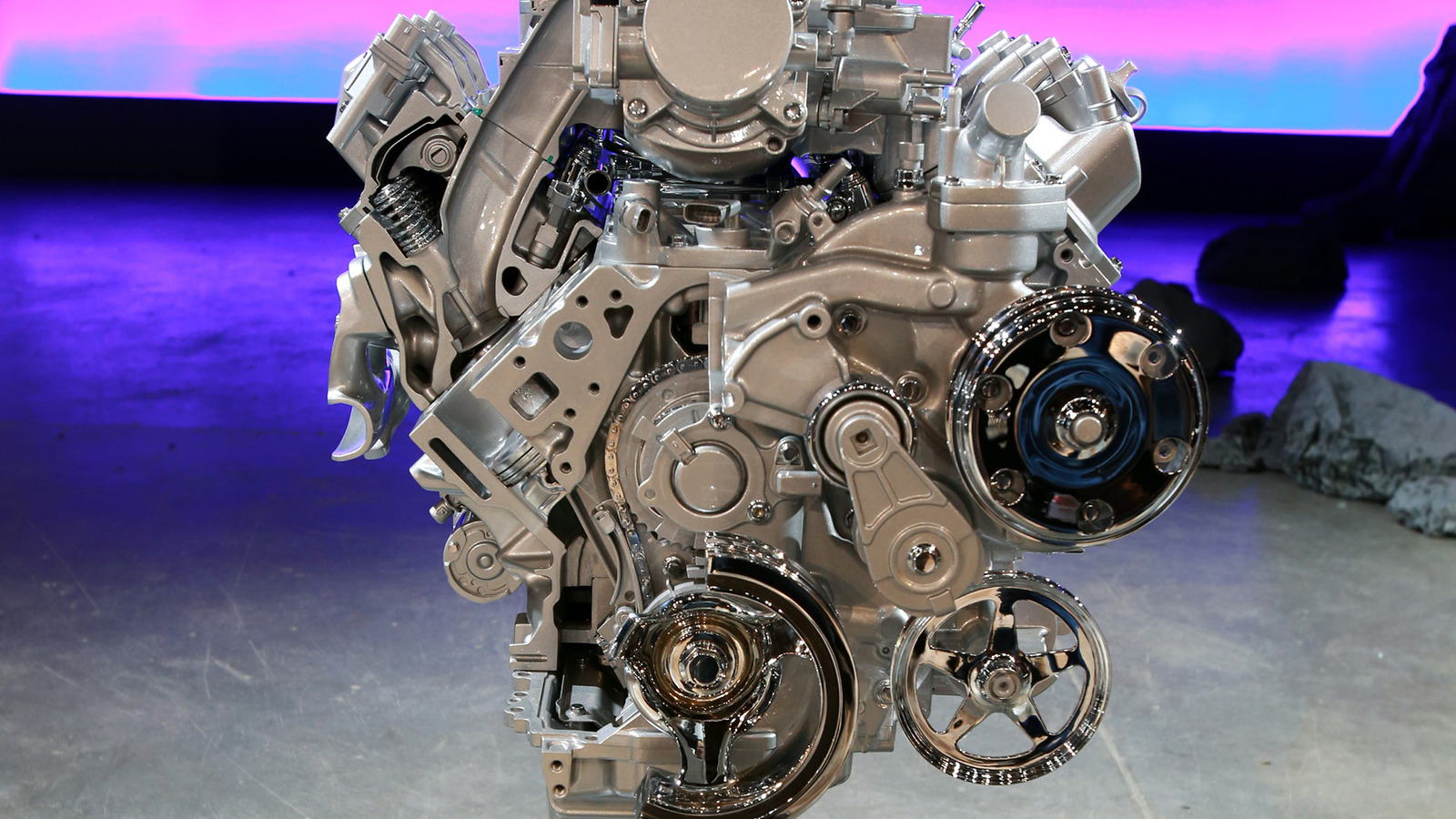The FCW System is a crucial safety feature in Honda vehicles that alerts drivers of an impending collision.
However, when the system fails, it can be alarming and dangerous.
In this article, we will explore the meaning of “FCW System Failed Honda,” its causes, and possible solutions.
We will also discuss the importance of the FCW system and how it works.
By the end of this article, you will have a better understanding of the FCW system and how to handle it when it fails.
Let’s dive in!
What does FCW mean on my Honda?
FCW typically stands for Forward Collision Warning in the context of automotive technology. Forward Collision Warning is a safety feature designed to alert the driver when the system detects an imminent collision with a vehicle or obstacle in the vehicle’s path. It uses sensors, such as cameras or radar, to monitor the road ahead and can provide visual and/or audible warnings to prompt the driver to take evasive action.
If you see “FCW” on your Honda’s display or dashboard, it indicates that your vehicle is equipped with this safety feature and is actively monitoring the road for potential frontal collisions. Keep in mind that the specific features and functionalities may vary depending on the model and trim level of your Honda vehicle.
How Does the FCW System Work?
FCW stands for Forward Collision Warning, which is a system that helps drivers avoid rear-end collisions by alerting them when they are approaching an obstacle too fast or too close. FCW uses sensors such as radar, camera, or laser to scan the road ahead and measure the distance and speed of the vehicle and the object in front of it. If the system detects a potential collision, it warns the driver with visual, audible, or haptic signals, such as a light, a beep, or a vibration. The driver can then brake or steer to avoid the crash. However, FCW does not automatically brake or steer for the driver, unlike some other systems that have Automatic Emergency Braking (AEB) or Lane Keeping Assist (LKA) features. FCW is only a warning system that relies on the driver’s response.
What Does It Mean When FCW System Failed Honda?
If you see a message indicating that the Forward Collision Warning (FCW) system has failed in your Honda, it means that there is an issue or malfunction with the FCW system. When this happens, the system may not be able to provide the intended warnings or assistance in the event of a potential forward collision.
What Causes FCW System Failed Honda?
The “FCW System Failed” message in a Honda typically indicates that there is an issue with the Forward Collision Warning (FCW) system. Several factors can contribute to the failure of the FCW system, including:
Sensor Blockage
The FCW system relies on sensors, such as radar and cameras, to detect objects and potential collisions in the vehicle’s path. If these sensors are blocked or obstructed by dirt, snow, ice, or other debris, the system may not function correctly.
Sensor Calibration Issues
Sensors need to be calibrated properly to ensure accurate detection and warnings. If there are calibration issues with the FCW sensors, it may lead to a failure of the system.
System Malfunction
Like any electronic system, the FCW system can experience malfunctions due to technical issues, software bugs, or hardware failures. A malfunction in the system’s components or control unit can result in the “FCW System Failed” message.
Electrical Problems
Issues with the electrical components, wiring, or connections related to the FCW system can also cause failures. Electrical problems may disrupt the communication between the sensors and the vehicle’s onboard computer.
Software Glitches or Updates
Software glitches or the need for system updates may contribute to FCW system failures. In some cases, updating the vehicle’s software or addressing software bugs can resolve the issue.
Important: Why Honda Civic Won’t Go Into Gear? All Reasons & Quick Fix
How To Fix FCW System Failed Honda -A Step By Step Guide

Fixing a “FCW System Failed” issue in a Honda typically involves troubleshooting and, in some cases, seeking assistance from a qualified service technician. Here is a step-by-step guide that you can follow:
Check for Sensor Obstructions
- Ensure that the sensors, such as radar and cameras, are not blocked or obstructed by dirt, snow, ice, or other debris.
- Clean the sensors using a soft cloth or brush to remove any accumulated dirt or debris.
- Restart the Vehicle
- Turn off the ignition and restart the vehicle. In some cases, a simple restart may resolve temporary system glitches.
Check for Software Updates
- Verify if there are any available software updates for your vehicle’s FCW system.
- Visit the Honda official website or contact a Honda service center to inquire about software updates for your specific model.
Perform a Sensor Calibration
- Some vehicles may have a sensor calibration procedure outlined in the owner’s manual.
- If possible, follow the calibration instructions to ensure the sensors are properly aligned.
Inspect for Visible Damage
- Examine the sensors and surrounding areas for any visible damage or signs of wear.
- If you notice a physical damage, it may require professional inspection and repairs.
Check for Recalls or Technical Service Bulletins (TSBs)
- Visit the Honda website or contact a dealership to check for any recalls or TSBs related to the FCW system.
- Manufacturers may release updates or recalls to address specific issues.
Are There Any Recalls Related To FCW Failures On Honda Cars?
There are no official recalls related to FCW failures on Honda cars. However, there are some common causes and solutions for the FCW system failure message that some Honda owners have reported. These include:
- Bad weather: Rain, snow, fog, or dirt can interfere with the FCW camera or sensor and cause false readings. The solution is to wait for the weather to clear or clean the camera or sensor area.
- Extreme interior heat: High temperatures can affect the FCW camera and cause it to malfunction. The solution is to park the car in a shaded area or use a sunshade to reduce the heat.
- Speed sensor: A faulty speed sensor can prevent the FCW system from receiving accurate speed data and issuing warnings. The solution is to replace the speed sensor or check the wiring and connections.
- Normal wear: The FCW system components can wear out over time and need to be replaced or recalibrated. The solution is to have the car inspected by a qualified mechanic who can diagnose and fix the problem.
How do I reset my FCW?
Resetting the Forward Collision Warning (FCW) system in a Honda may vary depending on the model and the specific nature of the issue.
Typically, a simple reset involves turning off the ignition and restarting the vehicle.
Here are general steps you can follow:
Turn off the Ignition
- Bring your vehicle to a complete stop.
- Turn off the ignition and remove the key, or press the “Engine Start/Stop” button to turn off the engine.
Wait for a Few Minutes
- Allow the vehicle to sit turned off for a few minutes. This brief pause can sometimes help clear temporary glitches in the system.
Restart the Vehicle
- Turn on the ignition or press the “Engine Start/Stop” button to restart the vehicle.
Check the FCW System
- After restarting, check the instrument cluster or infotainment display for any warning messages related to the FCW system.
- Drive the vehicle to see if the FCW system is functioning properly.
Where is the FCW sensor located?

The location of the Forward Collision Warning (FCW) sensor can vary depending on the specific make and model of your Honda vehicle, as well as the model year. Generally, the FCW system relies on sensors such as radar, lidar, or cameras to detect objects and potential collisions. Here are some common locations for these sensors:
-
Behind the Rearview Mirror
Many vehicles have sensors located behind the rearview mirror on the interior side of the windshield. These sensors may be part of a camera-based system.
-
Grille Area
Some vehicles have radar sensors or other components located in the front grille area. These sensors are often visible as small, round, or rectangular units.
-
Front Bumper
Radar sensors or cameras may also be located within the front bumper, integrated into the design for a more discreet appearance.
-
In the Headlights
In some cases, advanced systems may have sensors integrated into the headlights, allowing them to perform functions related to adaptive lighting and collision warning.
-
Fog Light Area
Some vehicles with fog lights may have sensors or cameras located in the vicinity of the fog lights.
Also Read: Honda Element LX Vs. EX: What Is Their Difference?
How do I turn off my FCW Honda Accord?
You can turn off the FCW (forward collision warning) system if you’d like. To do so, simply press and hold the FCW OFF button located on the instrument panel for two seconds. If you can’t find the button, check your owner’s manual. However, we do not recommend turning off the FCW system, as it is an important safety feature that can help you avoid collisions.
What is the difference between FCW and AEB?
FCW stands for Forward Collision Warning, which is a system that alerts the driver when they are approaching an obstacle too fast or too close. AEB stands for Automatic Emergency Braking, which is a system that automatically applies the brakes or increases the braking force if the driver does not respond to the FCW alert.
FCW and AEB work together to prevent or mitigate rear-end collisions by sensing the distance and speed of the vehicle and the object in front of it. However, FCW is only a warning system that relies on the driver’s response, while AEB is an intervention system that can brake or steer the driver.
How accurate is the FCW system?
The accuracy of the FCW system depends on several factors, such as the type of sensor, the weather conditions, the vehicle speed, and the driver’s reaction. According to some studies, the FCW system can reduce the rear-end collision rate by 23% and the injury rate by 44%.
However, the system is not perfect and may sometimes fail to detect an obstacle or issue a false warning. Therefore, drivers should not rely solely on the FCW system and should always pay attention to the road and drive safely.
Conclusion
The FCW system is a crucial safety feature that can help prevent accidents on the road.
If you encounter the “FCW System Failed Honda” message, it is essential to take immediate action to diagnose and fix the problem.
Some of the common causes of FCW sensor failure include bad weather, dirty sensors or cameras, and normal wear and tear.
It is important to have your vehicle regularly inspected and maintained to ensure that the FCW system is functioning correctly.
Remember, the FCW system is designed to keep you safe on the road, so don’t ignore any warning signs.
Stay safe and drive responsibly!




